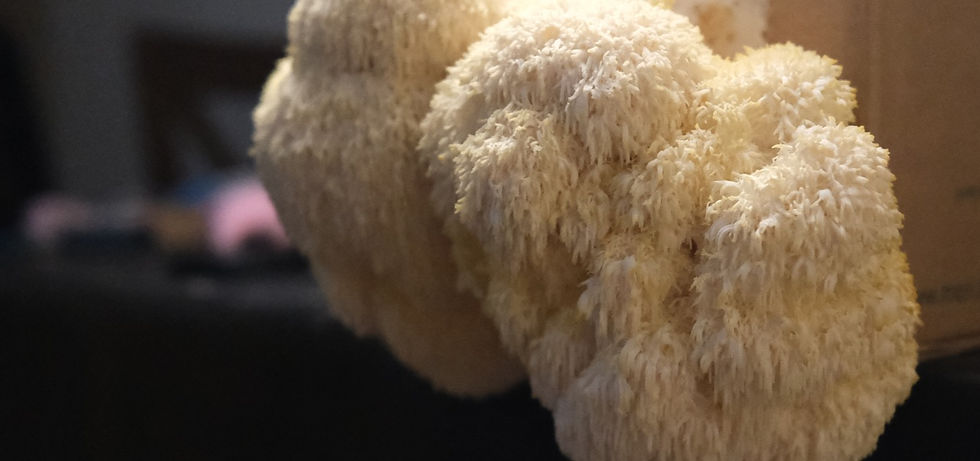

Chris Holdham
23 Feb 2023
Exploring the Healing Powers of Medicinal Fungi in the UK: From Ancient Lore to Modern Science
Medicinal Fungi UK
Medicinal fungi have long held a place of reverence in traditional healing practices across the world, including in the United Kingdom. From ancient remedies passed down through generations to modern scientific research, fungi have been valued for their therapeutic properties and potential health benefits. In the UK, a diverse array of fungi species have been utilized for centuries, contributing to the rich tapestry of herbal lore and folk medicine. This article explores the historic and modern uses of medicinal fungi in the UK, shedding light on their intriguing properties and the scientific evidence supporting their medicinal potential.
Historic Uses of Medicinal Fungi:
Throughout history, fungi have been integral to traditional British medicine, with remedies dating back to ancient times. One notable example is the Turkey Tail mushroom (Trametes versicolor), which has been used in Celtic herbal medicine for centuries. Known for its vibrant colors and distinctive appearance, Turkey Tail was traditionally brewed into teas or decoctions to support immune function and promote overall well-being.
Similarly, the Birch Polypore (Piptoporus betulinus) has a rich history of medicinal use in the UK. Found growing on birch trees, Birch Polypore was utilized as a topical treatment for wounds and infections due to its purported antibacterial and antifungal properties. Historical accounts suggest that the fungus was applied directly to wounds to promote healing and prevent infection, highlighting its importance in traditional healing practices.
Modern Research on Medicinal Fungi:
In recent years, scientific research has begun to uncover the potential health benefits of medicinal fungi, validating many traditional uses and uncovering new therapeutic applications. One well-studied example is the Reishi mushroom (Ganoderma lucidum), which has a long history of use in traditional Chinese medicine. Research suggests that Reishi contains bioactive compounds, such as polysaccharides and triterpenes, which may support immune function, reduce inflammation, and enhance overall health (Wachtel-Galor et al., 2011).
Additionally, the Lion's Mane mushroom (Hericium erinaceus) has gained attention for its potential cognitive and neurological benefits. Studies indicate that Lion's Mane contains compounds that may stimulate nerve growth factor (NGF) production, which could potentially support brain health, memory, and cognitive function (Friedman, 2015).
Another medicinal fungus with promising health-promoting properties is Chaga mushroom (Inonotus obliquus). Traditionally used in Siberian folk medicine, Chaga has gained popularity as an adaptogen and immune-modulating agent. Research suggests that Chaga contains antioxidants, such as polysaccharides and phenolic compounds, which may help protect against oxidative stress and support immune function (Gryganskyi et al., 2017).
Ethical Considerations and Safety:
While the potential health benefits of medicinal fungi are promising, it's essential to exercise caution when foraging and using wild mushrooms for medicinal purposes. Some species of fungi can be toxic or cause adverse reactions if consumed improperly. Therefore, it's crucial to consult with knowledgeable experts or healthcare professionals before incorporating medicinal fungi into your wellness routine.
In conclusion, medicinal fungi have played a significant role in traditional and modern healing practices in the UK. From ancient remedies passed down through generations to cutting-edge scientific research, fungi continue to intrigue and inspire with their potential therapeutic properties. As we continue to explore the healing powers of medicinal fungi, it's important to approach their use with respect, caution, and a commitment to ethical foraging practices.
References:
Wachtel-Galor, S., Tomlinson, B., & Benzie, I. F. (2011). Ganoderma lucidum ("Lingzhi"), a Chinese medicinal mushroom: biomarker responses in a controlled human supplementation study. British Journal of Nutrition, 107(7), 1017-1027.
Friedman, M. (2015). Chemistry, nutrition, and health-promoting properties of Hericium erinaceus (Lion's Mane) mushroom fruiting bodies and mycelia and their bioactive compounds. Journal of Agricultural and Food Chemistry, 63(32), 7108-7123.
Gryganskyi, A. P., Golan, J. J., Sibirny, A. A., & Gribaldo, S. (2017). The genome of the basidiomycetous yeast and human pathogen Trichosporon asahii: Insights into lifestyle transitions and host adaptation. Scientific Reports, 7(1), 1-12.
